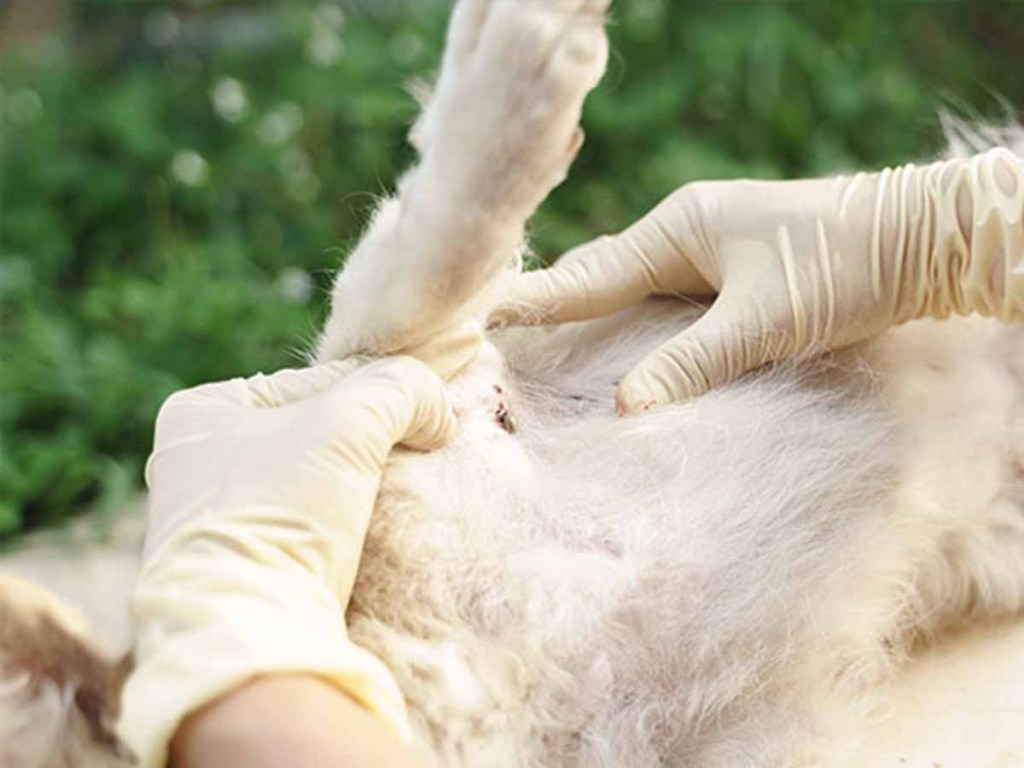
Checking for and removing ticks
There’s a right way to remove a tick from your pet
No matter how careful you are, ticks may still manage to land on you or your pet because they are extremely well adapted at hiding in the environment, detecting approaching hosts, and hitching a ride. Follow these tips to effectively check for and remove ticks from your pet.1
Start by preventing tick attacks by avoiding areas with long grass or marginal forest and shrubs. If there are ticks around your home, create barriers by cutting bands of vegetation short between your lawn and surrounding natural areas, or use mulch and wood chips a few feet wide to create vegetation-free bands.
Always check your pet and yourself for ticks when you return from areas where you may have been exposed. Dress appropriately, wearing long pants and boots if possible.
Removing ticks
When examining your pet, remember—depending on its species and life stage, a tick can be as small as a pencil point, or as large as a bean (if it’s engorged). If you find a tick on the coat that hasn’t attached yet, just brush or pick it off and dispose of it. If you find a tick attached to your pet’s skin, don’t panic—it doesn’t necessarily mean disease.
However, it’s important to remove the tick properly. If you have never removed a tick, please visit your veterinarian to learn how to do this correctly. After tick removal, you may want to keep it sealed tightly in a jar so you can show it to your veterinarian, who knows which potential disease the particular tick species can transmit.
When ticks feed, they insert their mouthparts into the skin, and these need to be removed along with the rest of the tick to avoid risk of infection. If you’re unsure, you can have the tick removed at your veterinary clinic.
How to remove ticks
Step 1: Don’t apply any substances (alcohol, etc) to the tick hoping it will let go — it won’t.
Step 2: Consider wearing latex gloves to protect your hands.
Step 3: Use sharp, pointed tweezers or special tick tweezers (ask your veterinarian).
Step 4: Grasp the tick as close to its embedded mouthparts as possible, next to your pet’s skin. Do not grasp or squeeze the tick’s head or body—this can help expel more organisms into your pet.
Step 5: Pull straight out with a slow, steady motion. Don’t twist or turn the tick as you go, as this may disconnect the head or mouthparts.
Step 6: Keep the tick in a clean jar or container so you can take it to your veterinarian for identification so you know what species it was to help determine the risks of disease transmission.
Step 7: Once the tick is removed, wash the bite area with mild soap and warm water. Keep an eye on it over the next several days for signs of irritation or infection. It should clear up in a few days—if not, see your veterinarian.
If you tear or bisect the tick during removal
It is vitally important to make sure the tick head is removed with the tick body to prevent additional infection and discomfort. If the tick is crushed or bisected while you are removing it, you need to make sure you remove all of the bug’s body from your pet’s skin. Take another deep breath and use the tweezers to draw out the head and legs.
Remember that you are not trained to do this, and if removing the tick starts to feel precarious, call your veterinarian for advice. He or she will be able to tell you whether or not you need assistance. The same holds true for when your dog or cat has multiple ticks on its body. Veterinarians are much better equipped to remove many ticks because they have advanced training and are set up to perform the procedure in a sanitary environment. It can be quite common for a single dog to have upwards of twenty ticks if he has been hiking on a particular trail during peak tick season (September and May). In those cases, you’ll most definitely want your veterinarian’s help to keep your pet safe during and after the removal process.
REFERENCES:
- Blagburn BL, Dryden MW. Biology, treatment, and control of flea and tick infestations. Vet Clin N Am Small Anim Pract. 2009;39(6):1173-1200.
More like this
- Caring for a senior pet
 Caring for a senior pet Cats and dogs may need … Read more
Caring for a senior pet Cats and dogs may need … Read more - Dealing with your pet’s allergies
 Dealing with your pet’s allergies Just like humans, pets can … Read more
Dealing with your pet’s allergies Just like humans, pets can … Read more - Five things you may not know about leptospriosis
 Five things you may not know about leptospirosis Leptospirosis is … Read more
Five things you may not know about leptospirosis Leptospirosis is … Read more





